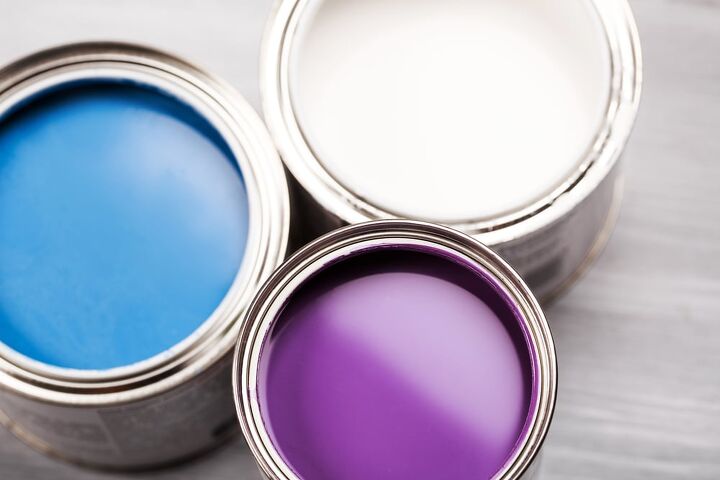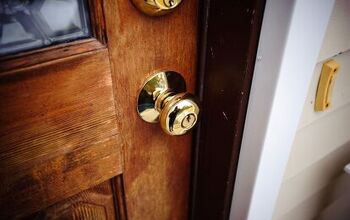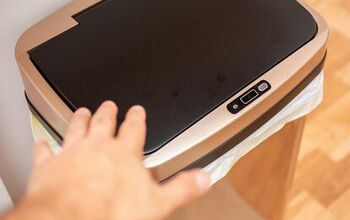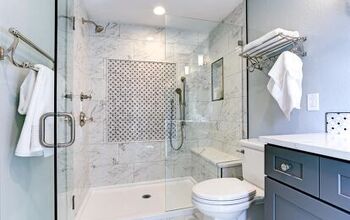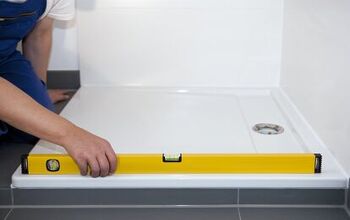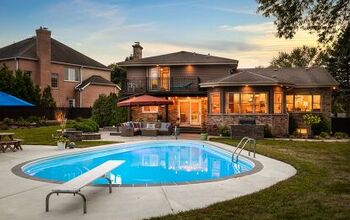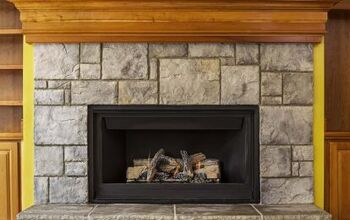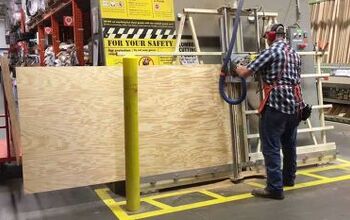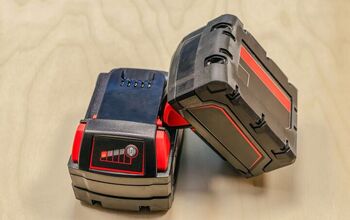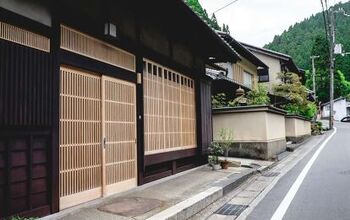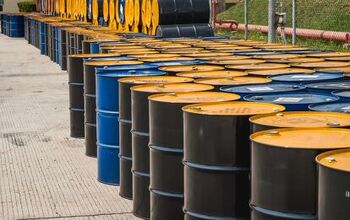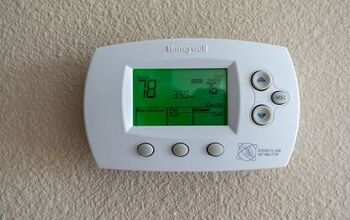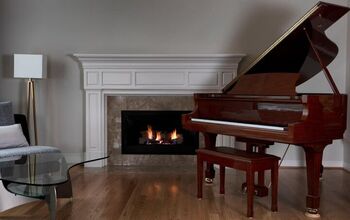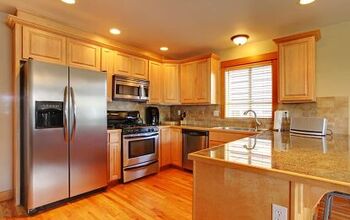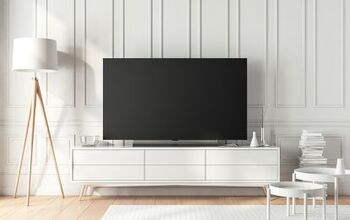Standard Paint Can Sizes (with Drawings)

Once you’ve chosen the perfect color for your painting project, it’s now time to determine how much paint to buy. Several things can impact how much surface a gallon of paint will cover. Use this as a guide to determine how much paint you will need for your project.
Standard sizes of paint cans include 1/4 pint, 1/2 pint, 1 pint, 1 quart, 1/2 gallon, and 1 gallon. Additionally there are 5-gallon buckets of paint for larger projects. To find out how much paint you need for your project, find the surface area of the space you will be working on. Don’t forget to subtract windows and doors.
What’s the Average Size of a Paint Can?
The most popular size paint cans are 1 gallon, 1 quart, and 1 pint. If you’re looking for a smaller amount of paint, there are also ½ gallons, ½ pints, and ¼ quarts.
- 1-gallon paint can is 7.5 inches tall and has a diameter of 6.5 inches. There are 128 fluid ounces of paint in a 1-gallon paint can
- 1-quart paint can is 4 ⅞ inches tall with a diameter of 4 ¼ inches, and there are 32 fluid ounces in a 1-quart paint can.
- 1-pint can of paint is 3 15/16 inches tall with a diameter of 3 7/16 inches. A1-pint can hold 16 fluid ounces of paint.
- 5-gallon buckets of paint are available for larger or outdoor projects. These containers are 14 ½ inches in height and 12 inches in diameter. A 5-gallon paint bucket will hold 640 fluid ounces.
Standard Paint Can Sizes
| Size Of Paint Can | Weight | Dimensions | Fill Capacity |
| ¼ Pint | 8 oz | 2 1/16” x 2 ½” | 4 fl. oz. |
| ½ Pint | 11.2 oz | 3” x 2 7/8” | 8 fl. oz. |
| Pint | 20 oz | 3 15/16” x 3 7/16” | 16 fl. oz. |
| Quart | 2.2 lbs. | 5” x 5” | 32 fl. oz. |
| ½ Gallon | 6.25 lbs. | 5 7/8” x 5 3/8” | 64 fl. oz. |
| Gallon | 12.1 lbs. | 7 5/8” x 6 5/8” | 128 fl. oz. |
| 5 Quart | 11 lbs. | 9 ½” x 6 5/8” | 190 fl. oz. |
| 5 Gallon | 49 lbs. | 14 ½” x 11 ¾” | 640 fl. oz. |
How Much Paint Do I Need Per Square Foot?
The size of the space you’re painting determines the amount of paint you need. One gallon of paint can cover up to roughly 400 square feet, enough paint for a bathroom. Two gallons can cover about 800 square feet, enough paint to cover an average size room.
Three gallons of paint will cover up to 1,200 square feet. This is the size of a large room or two average-sized rooms (remember, consider the length and height of walls). If you have vaulted ceilings, you may need an extra gallon of paint.
Four gallons of paint can cover up to 1,600 square feet, enough paint to cover several average-sized rooms. This can also cover a large great room. You can even paint a vinyl fence if you are careful.
How To Know How Much Paint You’ll Need
How Do I Calculate How Much Paint I Need?
When trying to figure out how much paint you should buy, consider the following variables.
Paint Coverage Area
Determine the coverage you will need for your space. The can should tell you an estimated range, but usually, a quart covers 100 square feet, a gallon 400 square feet.
Multiply your wall’s width times height to get the area of the wall. If your wall is 14 feet wide by 10 feet high, it has an area of 140 square feet. To cover the whole room, you will most likely need more than a gallon of paint.
For walls with baseboards, doors, windows, crown molding, or other trim, calculate the surface area of each component separately.
Keep in mind that unpainted drywall absorbs more paint than a previously painted wall. Apply two coats of paint to any unfinished walls or walls that have patches or are dark-colored. Add a tint to the primer when painting over dark colors, preferably one that matches the paint color. It is possible to paint laminate flooring.
Measuring Around Doors
After you find the surface area of your wall, calculate the area of each door. Subtract the area of the door from the surface area of the wall. Then, find the surface area of the trim and subtract that from the wall’s surface area.
Measuring Around Windows
Measure the wall to find the total area, then calculate the size of each window, including the frame and glass. Subtract the window area from the square footage of the walls and calculate the area of the windows separately.
You will most likely use a different color paint and finish for the trim, including windows, doors, molding, and baseboards. Measure the length of the trim then multiply that total by .5 feet.
Ceilings and Trim
Calculate the surface area of the ceiling by multiplying the width times the length. If your ceiling measures 15 feet by 15 feet, you need to buy enough paint to cover 225 square feet. For two coats of paint, you’ll need one gallon and an additional quart to cover the ceiling.
How Much Paint Do I Need for a 3000 sq. ft. House?
For siding, soffits, and overhangs, the average two-story home (approximately 2,500 square feet) will require 22 to 25 gallons of paint, with 3 to 5 gallons for accentuated trim.
It will take 25 to 30 gallons for a larger home (about 3000 square feet) and 5 to 7 gallons for the highlighted trim.
How Much Paint Do I need for a Small Hallway?
What About Spray Paint?
Spray Paint Can Sizes
Aerosol spray paint cans typically come in four sizes: 4 ½ ounces, 6 ounces, 12 ounces, and 16 ounces. Spray paint sizes are based on net weight, so a 4 ½ ounce spray paint can hold about 6 fluid ounces.
A 12 ounce can of spray paint holds about 16 fluid ounces. Then, a 16 ounce can of spray paint holds approximately 20 fluid ounces.
Spray Paint Coverage
Coverage is based on the paint viscosity and application method. Typically, a 4 ½-ounce can of spray paint covers about 7 square feet. A 12-ounce can of spray paint covers about 20 square feet, and a 16-ounce can covers 30 square feet.
How Much Spray Paint Do I Need?
To determine the number of cans you need, find the overall square footage of the surface you want to paint. You need to know the amount of paint in each can and the number of coats you plan to apply. The manufacturer usually states the estimated square footage of coverage on the can.
You will achieve better results if you apply multiple, thin coats, so plan on at least two coats. Bright colors need one to two additional coats, and intense bright colors require at least five extra coats. Most neutral or deep colors only require two or three coats to achieve an opaque finish.
Keep in mind that textured surfaces will have more surface area, so factor that in when buying the paint. Some surfaces like grids or shutters have many openings. While they don’t have much surface area, you can end up with overspray.
How Many Cans Of Spray Paint Do I Need For A Dresser?
Use as many light, thin coats as necessary to achieve the desired coverage. You could use about 3.5 cans for this project. this will allow you to do about three coats which should be sufficient depending on how big the dresser is.
Now, if it’s a vanity-style dresser with three columns of drawers, you can expect to use about 5-8 cans depending on how tall and deep the dresser is.
Circumstances That Affect Paint Coverage
You’ll need to know the different circumstances that can possibly affect the paint coverage, as this will determine just how much paint you need.
Dramatic Color Changes
If you’re looking for a dramatic color change to your walls, it’s going to require extra coats of paint. This is especially the case when going from a dark color to a light neutral color.
Use a primer to help make covering up the previous paint much easier. Plus, it will reduce the coats of paint needed and help to cover up the dark color.
Fresh Drywall
Fresh drywall is porous, so it can absorb a lot of the paint. You should prime your drywall with two coats of primer before painting. Factor in two extra coats of primer to be sure the drywall is well-prepped.
Textured Walls
If your wall is textured, it has more surface area. More surface area means that you’ll need more paint to cover it. Stucco, brick, and popcorn ceilings all have more surface area to paint.
A good rule of thumb is to buy 20% more paint for a textured surface. If you paint a 100 square foot room, buy enough paint for 120 square feet.
How to Choose a Paint Sheen
After you’ve selected the paint color, it’s time to pick out the right sheen. Sheen, or finish, describes the amount of light reflection that appears on the wall. The less reflection of light and more subtle appearance on the wall, the harder it is to remove stains.
You have several options when choosing your paint finish.
Flat Finish
A flat finish indicates the least amount of shine to the paint. It’s non-reflective so that it can hide minor imperfections on the wall’s surface. A flat finish paint is a good option for low traffic areas, interior walls, and ceilings.
Matte Finish
A matte finish has a low-luster reflective look that is durable and easy to clean. It’s easy to touch up but can also hide minor imperfections on the surface of the wall. A matte finish is a good option for low to moderate traffic areas like bedrooms and interior walls.
Semi-Gloss Finish
A semi-gloss finish has a sleek appearance. It’s a good option for cabinets, trim, high traffic areas, and high moisture areas. Keep in mind that you should apply multiple thin coats to achieve the smoothest finish if you use semi-gloss.
High-Gloss Finish
A high-gloss finish has a shinier appearance than semi-gloss. It creates a brilliant, glass-like finish that is great for high-use surfaces. Like semi-gloss, apply high-gloss in multiple thin coats for the smoothest finish.
Eggshell Finish
An eggshell finish has a soft, velvet-like appearance. This is a good option for moderate traffic areas like the living room.
Satin Finish
A satin finish has a pearl-like look that is good for high-traffic areas with some exposure to moisture. This is an excellent option for kitchens and bathrooms.
Related Questions
How do I clean my painted walls?
If you want to clean your walls, you should first know which type of paint finish you have. Matte and flat finishes will be harder to clean than semi-gloss or high-gloss finishes. First, dust the walls, then protect your floors with a sheet or towel to prevent any drips from the water. Mix water and dish soap and test a small patch on the wall. Gently wash the wall in circular motions, then rinse with fresh water for clean walls.
Is wallpaper cheaper than paint?
On average, wallpaper is more expensive than paint. Basic wallpaper can run $25 to $50 per roll, and custom wallpaper can cost as much as $5,000 per roll. One roll of wallpaper covers about 30 square feet, so expect to pay $1 to $2.50 per square foot. Paint is cheaper than wallpaper and requires far fewer supplies. An amateur can also apply paint, whereas wallpaper is trickier to apply.
Related Articles

Stacy Randall is a wife, mother, and freelance writer from NOLA that has always had a love for DIY projects, home organization, and making spaces beautiful. Together with her husband, she has been spending the last several years lovingly renovating her grandparent's former home, making it their own and learning a lot about life along the way.
More by Stacy Randall



